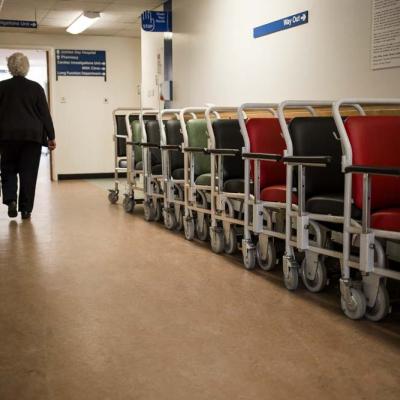What’s driving increasing length of stay in hospitals since 2019?
What’s driving increasing length of stay in hospitals since 2019?
19 December 2023
About 11 mins to read

Key points
- Since the COVID-19 pandemic, fewer patients have been admitted for treatment in NHS hospitals. However, those admitted are spending longer in hospital. This has contributed to record waits for elective treatments and emergency care and raised concerns about NHS hospital productivity.
- While there were 521,000 (9%) fewer emergency hospital admissions in 2022 compared with 2019, the average length of stay for these patients increased by 1.1 days (14%). This analysis explores some health-related factors that might underlie this increase.
- There has been an increase in the proportion of both admitted patients aged 65 years and older and patients with more complex care needs. These increases, however, are in line with longer term trends and do not appear to account for all the differences in length of stay between 2019 and 2022.
- Hospital admissions in 2022 not involving COVID-19 were marginally longer than hospital admissions in 2019 (0.1 days, 1.3%), once age and clinical complexity are factored in.
- In 2022, 9% of emergency admissions involved COVID-19. These patients spent on average 8.6 more days – twice as long – in hospital than non-COVID-19 admissions, after controlling for age and clinical complexity. This suggests that the differences in length of stay between 2022 and 2019 may have been driven by admissions involving COVID-19.
- The number of recorded patients in hospital with COVID-19 has fallen dramatically since the start of 2021, with hospitalisation and survival rates improving greatly since the start of the pandemic. However, pressure on the NHS from the disease has not completely gone away. The latest national figures still report that 2,000 people in England are admitted to hospital with COVID-19 each week.
- Our analysis contributes to the debate around NHS productivity and raises questions about the contribution COVID-19 might have made to changes in length of stay in 2022. Further work is needed to better understand the contribution COVID-19 is making, the mechanisms behind this and whether these patterns have persisted into 2023. Efforts to address this, and other challenges, are needed if the NHS is to achieve its ambition to improve productivity levels.
Further reading
What’s driving increasing length of stay in hospitals since 2019?
Work with us
We look for talented and passionate individuals as everyone at the Health Foundation has an important role to play.
View current vacanciesThe Q community
Q is an initiative connecting people with improvement expertise across the UK.
Find out more

